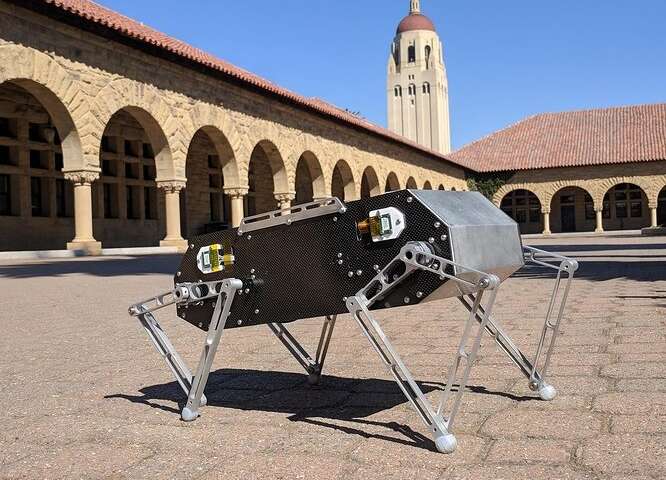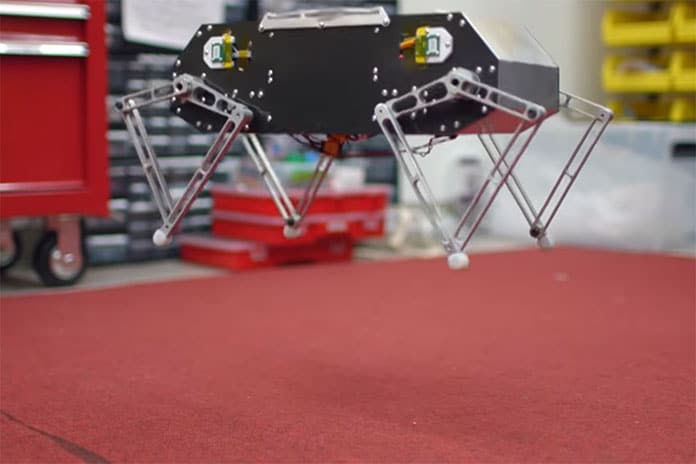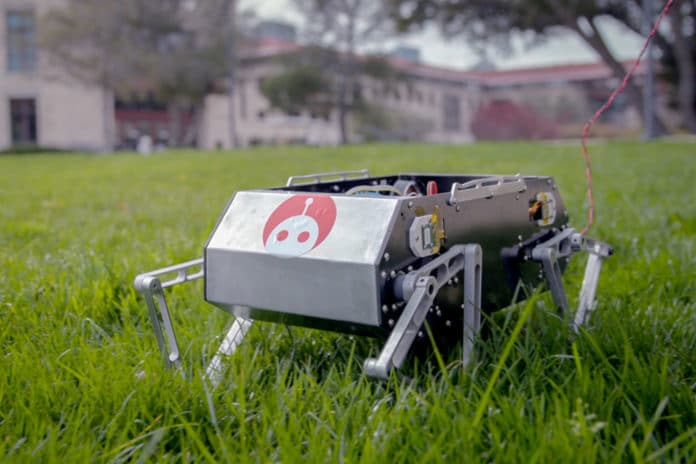You might have seen a robot doing perfect backflips, climbing vertical walls cleverly. Also, it is not new a robot having dog-like talents, but buying one that can do more than the basic things, is not really practical.
A group of students from Stanford University has a better solution. They have created a four-legged bot that can dance, backflip, jump and trot without requiring exotic hardware. ‘Doggo’, the mechanical canine has a similar design to other small quadrupedal robots, but what makes it stands out of the others is its low cost and accessibility.
Putting their own twist on robots that walk through complicated landscapes, the Stanford team made the robot dog capable of performing acrobatic tricks and traversing challenging terrain but also designed it with reproducibility in mind.

The team estimates its total cost to be less than $3,000. In addition, the design is completely open source, that means anyone can print off the plans and assemble a Doggo of their very own.
“We had seen these other quadruped robots used in research, but they weren’t something that you could bring into your own lab and use for your own projects,” said Nathan Kau, a mechanical engineering major and lead for Extreme Mobility. “We wanted Stanford Doggo to be this open source robot that you could build yourself on a relatively small budget.”
Although the mechanical canine robot’s cost is low, it actually performs better than expensive robots, thanks to improvements in the design of its leg mechanism and the use of more efficient motors. It uses force-sensing external motors that continuously determine the levels of force and torque needed for each movement. In any situation, when the robot’s ever out of position, the motors are ready to resist.

This tiny robot dog is also more powerful than you might think. Being both very light and dense, it can jump as high as 3.5 feet in the air.
“We’re hoping to provide a baseline system that anyone could build,” said Patrick Slade, a graduate student in aeronautics and astronautics and mentor for Extreme Mobility. “Say, for example, you wanted to work on search and rescue; you could outfit it with sensors and write code on top of ours that would let it climb rock piles or excavate through caves. Or maybe it’s picking up stuff with an arm or carrying a package.”
Machines like Doggo are part of what some researchers think is a coming robotic revolution. These robots are becoming more capable and could be useful tools for various jobs like surveillance, security, and even package delivery.
The relatively affordable off-the-shelf parts make it far more accessible than other projects, though. This shows that you don’t need a well-funded tech company or a huge research grant to produce an athletic robot of your own.
Currently, Doggo is made for universities and labs only, but they will be soon trotting out into the real world.
Extreme Mobility is collaborating with the Robotic Exploration Lab to test new control systems on a second Stanford Doggo. The team has also finished constructing a robot twice the size of Stanford Doggo that can carry about 6 kilograms of equipment. Its name is Stanford Woofer.
